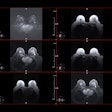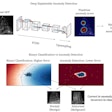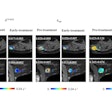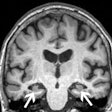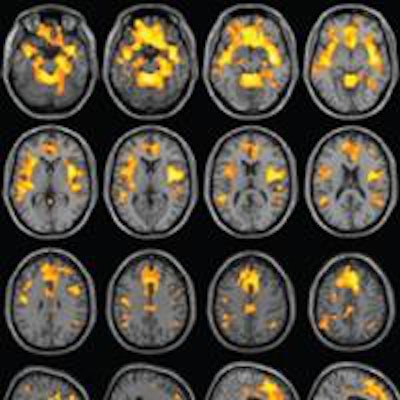
Women with long-term use of stimulant drugs have significantly less gray-matter volume in several brain areas than healthy women and even men who abused drugs more severely, according to a study published online July 14 in Radiology.
MRI showed the greatest loss in grey-matter volume in regions associated with reward, learning, and executive control among women with stimulant dependence, who had been off drugs for approximately 11 months, researchers from the University of Colorado found.
"The impulsivity, the approach to reward, the negative effects -- those are all worse in drug users, as we would expect," senior author Dr. Jody Tanabe, professor of radiology, vice chair of research, and neuroradiology section chief, told AuntMinnie.com. "What we were not expecting was the interaction between diagnosis and gender, such that those differences were much greater in the drug-using women than the drug-using men."
 Dr. Jody Tanabe from the University of Colorado.
Dr. Jody Tanabe from the University of Colorado.With these findings, Tanabe and colleagues hope to advance the understanding of how gender affects neuroimaging and the clinical course of substance dependence, and how that knowledge could lead to better medical treatment and recovery plans for drug users.
The findings "tell us -- which we knew -- that men and women are wired differently," she said. "And that may play a role in how they respond to drug treatment, whether that is behavioral treatment, medication, or that women may [get] into drugs because they have a different brain 'signature,' if you will."
Breaking new ground
To their knowledge, this study is the first to report such diverse anatomic differences in the brain between now-abstinent women and men with substance dependence, Tanabe and colleagues wrote.
The prospective study included 28 women and 31 men who had used stimulant drugs for an average of 15.7 years. The researchers also included 28 female and 40 male healthy control subjects who were similar in age to the dependent subjects. All subjects with drug dependence had been abstinent for at least 60 days (Radiology, July 14, 2015).
Brain imaging was performed on a 3-tesla scanner (GE Healthcare) with a standard quadrature head coil. High-spatial-resolution T1-weighted spoiled gradient-echo inversion-recovery sequences were used.
The images showed that women who used stimulant drugs had significantly lower grey-matter volume in the frontal lobe, limbic regions, temporal lobe, and inferior parietal lobule, compared with the healthy female subjects.
Interestingly, there were no significant differences in grey-matter volume between drug-using men and their male control counterparts.
 Consecutive T1-weighted MRI of the brain with superimposed population-level T-value map shows significantly greater grey-matter volume in female control subjects than in women with substance dependence, after correction for age, brain size, and years of education. Image courtesy of Radiology.
Consecutive T1-weighted MRI of the brain with superimposed population-level T-value map shows significantly greater grey-matter volume in female control subjects than in women with substance dependence, after correction for age, brain size, and years of education. Image courtesy of Radiology.The researchers also looked at how these brain volume differences correlated with behavior. In the women who used stimulant drugs, lower gray-matter volumes were linked with greater impulsivity and also more severe drug use.
By comparison, there were no such behavioral correlations among the drug-using men -- even though they had greater severity of drug use -- or the men and women in the control group, the authors noted.
The relationship between severity of drug use and grey-matter volume was most evident in the nucleus accumbens among the drug-dependent women.
Tanabe said the nucleus accumbens is a "dopamine-rich area" that is associated with the brain's reward function. "In an indirect way, we tapped into a possible dopamine mechanism because we measured the nucleus accumbens," she said.
Biggest surprise
The findings are particularly "striking for two reasons," Tanabe and colleagues wrote. "First, no group differences were observed in men, and second, the involved regions in women were anatomically vast and overlapped substantially with pathways implicated in reward, learning, executive control, and affective processing."
The most surprising result for the researchers was that they didn't see significant changes in the men with stimulant dependence, according to Tanabe.
"We really scratched our heads about that one," she said. "We thought that maybe [men's] drug use was not as severe as the women's, but in fact [men's] drug use was worse."
It remains "an open question why in this particular dataset, which is one of the larger datasets with 127 subjects total, the findings are much more striking in men," she added. "It could be that -- for whatever reason -- there were significant differences in personality traits in these groups. Perhaps that played a role."
From a clinical perspective, the findings in the immediate term increase awareness that women and men may not respond the same to treatment, Tanabe said. Long term, the researchers hope to investigate more deeply the reasons why men and women appear to react so differently.
"Is it because of hormones? Is it more related to depression?" Tanabe asked. "This is an important piece of information that indicates there is a biological difference, not only in men and women in general, but in drug users in particular."
The researchers would like to determine if the functional and structural differences in the brain parallel each other, though future research will depend in part on funding.
"This is not a new finding, because people are much more aware that gender makes a difference, but we do need to do more research on gender effects," she said.


.fFmgij6Hin.png?auto=compress%2Cformat&fit=crop&h=100&q=70&w=100)




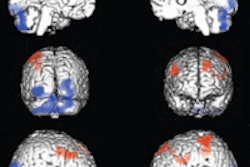
.fFmgij6Hin.png?auto=compress%2Cformat&fit=crop&h=167&q=70&w=250)
